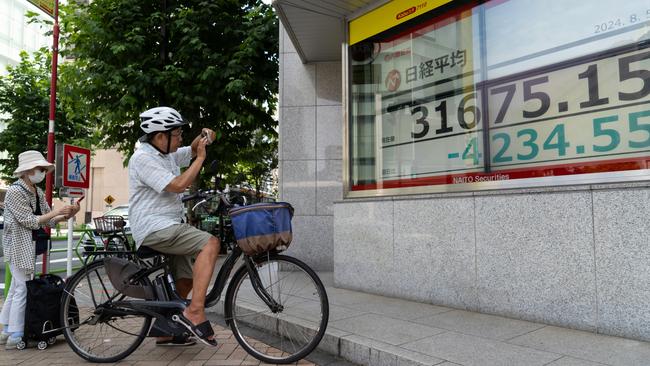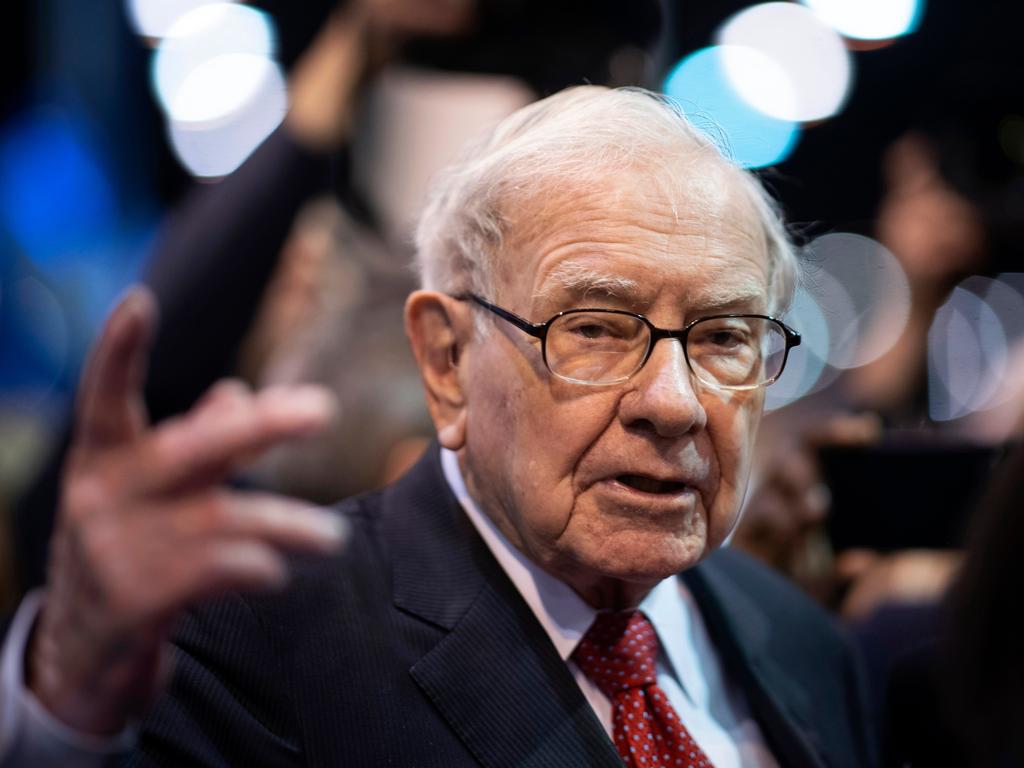ASX 200 dives 3.7pc amid US recession fears in worst day since Covid crisis
Investors wiped more than $100bn off the local bourse on Monday as a global sell-off accelerated after US economic data indicated the world’s biggest economy could sink into recession.
Investors wiped more than $100bn off the local sharemarket on Monday as a global stock sell-off accelerated after weaker than expected US economic data indicated the world’s biggest economy could sink into recession.
In a bleak day for investors the S&P/ASX 200 plunged 293.6 points or 3.7 per cent to a two-month low of 7649.6, wiping $102bn off the value of the index.
It was the biggest one-day drop since May 1, 2020, when the ASX 200 fell 5 per cent in a single day during the Covid-19 pandemic.
The 5.8 per cent fall in the past two trading sessions was the biggest since the early stages of the pandemic in March 2020.
Investors globally were spooked when US data including the ISM manufacturing survey and non-farm payrolls last week sparked concerns that the world’s largest economy was not as strong as previously thought. The US added 114,000 jobs last month, a drop from the previous month and less than expected, while the unemployment rate rose to the highest level since October 2021.
The plunge on Wall Street spilled over to Asia-Pacific markets on Monday, with Japan’s Nikkei 225 index plunging 12.4 per cent in its biggest single-day fall since 1987, a sell-off compounded by a resurgent yen after the Bank of Japan lifted rates for only the second time in 17 years last week.
S&P 500 futures were down 2.7 per cent and Nasdaq 100 futures down 5 per cent.
“Fears that the world’s largest economy is heading for a hard landing and will take global growth down with it have sparked another steep fall,” Pac Partners institutional sales trader James Nicolaou said.
Coupled with disappointing results from tech giants including Alphabet, Intel and Amazon, the latter falling 8.8 per cent on Friday, the US economic data led to share sell-offs at the end of last week.
ASX 200 falls were led by the technology, financials, property, energy and consumer discretionary sectors. WiseTech dropped 8.8 per cent, CBA fell 5.7 per cent, Goodman lost 7.1 per cent, Santos slumped 5 per cent and Aristocrat tumbled 4.8 per cent.
Capital.com senior financial markets analyst Kyle Rodda said a looming slowdown in the US economy had sparked doubts about the global economic growth.
The rapid rise in the yen was not only bad for Japanese exporters but was also driving an “unwind” of a major “carry trade”, whereby investors had leveraged up by borrowing in yen to buy other assets, chiefly US tech stocks.
“We are basically seeing a mass deleveraging as investors sell assets to fund their losses,” Mr Rodda said. “The rapidity of the move has caught a lot of investors off guard.”
That deleveraging triggered some “panic selling” which spilled over to the Australian market.
“There’s a lot of panic selling now, which is what causes these nonlinear reactions in asset prices to pretty straightforward fundamental dynamics,” Mr Rodda added.

WAM Global portfolio manager Nick Healy said the losses came amid a shift in messaging from companies that had expected a soft landing but were now warning of weaker conditions for consumers.
“The US economy and the US market are just such important parts of the global economy and the global markets that they absolutely will have knock-on effects in countries such as Australia,” Mr Healy said. “That being said, interest rates are up in Europe, also in the UK and Australia, and to some degree face similar underlying structures, and potential risk too.”
Bell Potter head of institutional sales and trading Richard Coppleson said the pattern of sharp US falls on a Friday accelerating on a Monday was a “worry” because of its similarity to the 1987 crash.
“One thing we all worry about is when the US has been smashed late in the week and then sold off hard on a Friday. The US have all weekend to mull over it and worry,” he said.
“Quite often we can see the US smashed on the opening, but it can see its lows during the day – it just depends on the US market’s mindset tonight.”
He said the 1987 crash occurred on a Monday in the US after a bad week before. It followed a very long bull market and “massive excesses”.
“This time we are suddenly worried about a US recession,” Mr Coppleson said.
“The market needs a lot more evidence on this before it really craps out, so for now this looks like a nasty sell-off that has been predicted for over nine months.”
The rout was expected to continue overnight, based on sharp falls in US futures in Asia-Pacific trading.
Markets were awaiting Monday’s release of the US ISM Services PMI and the Federal Reserve’s US Senior Loan Officers Survey, both of which had the potential to influence economic expectations.
IG market analyst Tony Sycamore said any surprising weakness in PMI data would intensify market jitters and probably force the Federal Reserve to cut rates by 50 basis points in September.
“If the ISM services PMI dips further that becomes a concern because manufacturing, the labour market, the services sector, all telling the same story that the Fed has left it too long to start cutting rates,” he said.
Mr Sycamore said the ASX 200 had a better chance than other indices to withstand the turmoil given it had not experienced such strong gains as Wall Street, noting investors should neither sell nor buy at this stage.
“This is a correction in many markets which were frothy, but the jury is still out if it turns into something more sinister.”
Betashares chief economist David Bassanese said while there were no signs that the US would enter into a recession, such concerns would ensure the RBA would not lift rates this month.
“As former RBA governor Ian Macfarlane once observed, recessions usually arise from imbalances or shocks – and the US is not really suffering from either at present,” he said.





To join the conversation, please log in. Don't have an account? Register
Join the conversation, you are commenting as Logout